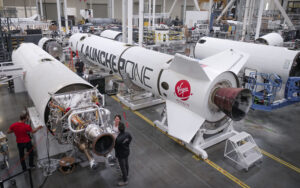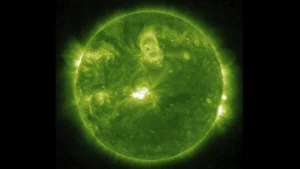KOSMOS 2499 Disintegrates
16th Feb 2023
The unexplained KOSMOS 2499 spacecraft disintegration has now been confirmed to have created a cloud of debris that could take a century, or even longer, to be dragged down into the Earth’s atmosphere.
SDS, the U.S. Space Force’s Defense Squadron, confirmed via Twitter that the space junk is now orbiting 1,169 kilometres above the Earth. The squadron tracks human-made objects that are within orbit. They also confirmed via Twitter that the KOSMOS 2499 spacecraft disintegrated overnight on 3rd January, with 85 trackable pieces of debris.
The breakup event continues to show what a huge problem space debris is likely to cause if left unaddressed. The problem is made more complex by the lack of information about KOSMOS 2499. ESCAPE Project’s Dr. Massimiliano Vasile explained in a recent interview with Orbital Today: “If you blow up a car, the debris is in a relatively confined area. But in space, that area keeps growing. So enforcement is a sticking point. If you blew up a satellite, the debris keeps diffusing, and you end up damaging everything in a region of space.”
KOSMOS 2499 was a mystery from the start
When KOSMOS 2499 was launched, it was not recognised by many space agencies as it was not on the launch manifest. In fact, U.S. satellite trackers initially catalogued the craft as a large piece of debris.
Eventually, Oleg Ostapenko, who was at the time the head of Roscosmos, stated that the craft was in space for research projects and had peaceful intentions, but speculation continued.
The space industry’s growth could find this kind of debris to be a huge stumbling block. As of March 2022, the European Space Agency’s Debris Office was tracking almost 30,000 pieces of junk. the UK Parliament has described debris as a “critical issue”.
Even small shards of materials have the capacity to do serious damage to satellites and spacecraft, and innovative solutions to space debris are currently being sought in order to ensure continued growth in the space industry.






Thank you for your comment! It will be visible on the site after moderation.